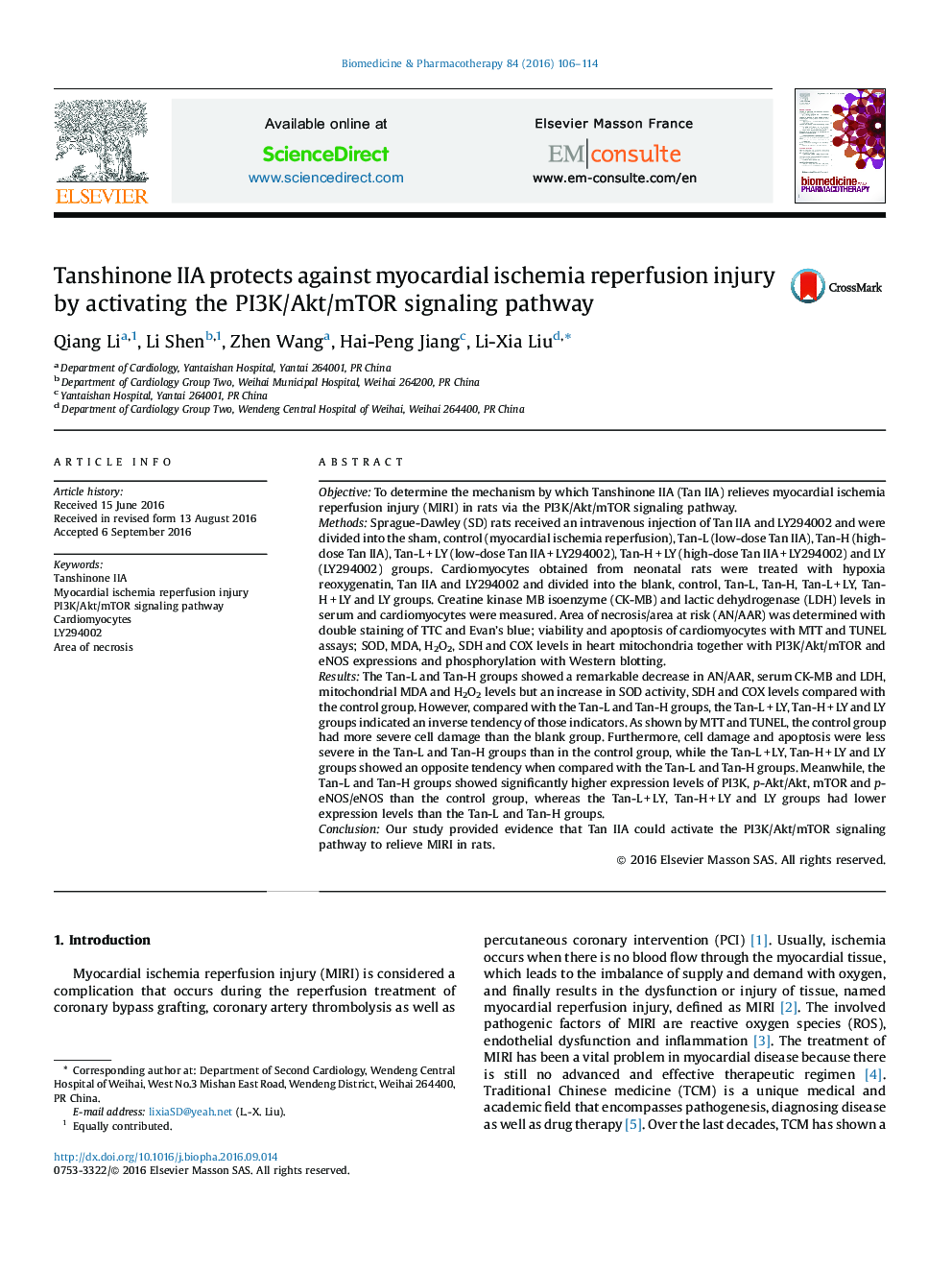| Article ID | Journal | Published Year | Pages | File Type |
|---|---|---|---|---|
| 5553345 | Biomedicine & Pharmacotherapy | 2016 | 9 Pages |
ObjectiveTo determine the mechanism by which Tanshinone IIA (Tan IIA) relieves myocardial ischemia reperfusion injury (MIRI) in rats via the PI3K/Akt/mTOR signaling pathway.MethodsSprague-Dawley (SD) rats received an intravenous injection of Tan IIA and LY294002 and were divided into the sham, control (myocardial ischemia reperfusion), Tan-L (low-dose Tan IIA), Tan-H (high-dose Tan IIA), Tan-LÂ +Â LY (low-dose Tan IIAÂ +Â LY294002), Tan-HÂ +Â LY (high-dose Tan IIAÂ +Â LY294002) and LY (LY294002) groups. Cardiomyocytes obtained from neonatal rats were treated with hypoxia reoxygenatin, Tan IIA and LY294002 and divided into the blank, control, Tan-L, Tan-H, Tan-LÂ +Â LY, Tan-HÂ +Â LY and LY groups. Creatine kinase MB isoenzyme (CK-MB) and lactic dehydrogenase (LDH) levels in serum and cardiomyocytes were measured. Area of necrosis/area at risk (AN/AAR) was determined with double staining of TTC and Evan's blue; viability and apoptosis of cardiomyocytes with MTT and TUNEL assays; SOD, MDA, H2O2, SDH and COX levels in heart mitochondria together with PI3K/Akt/mTOR and eNOS expressions and phosphorylation with Western blotting.ResultsThe Tan-L and Tan-H groups showed a remarkable decrease in AN/AAR, serum CK-MB and LDH, mitochondrial MDA and H2O2 levels but an increase in SOD activity, SDH and COX levels compared with the control group. However, compared with the Tan-L and Tan-H groups, the Tan-LÂ +Â LY, Tan-HÂ +Â LY and LY groups indicated an inverse tendency of those indicators. As shown by MTT and TUNEL, the control group had more severe cell damage than the blank group. Furthermore, cell damage and apoptosis were less severe in the Tan-L and Tan-H groups than in the control group, while the Tan-LÂ +Â LY, Tan-HÂ +Â LY and LY groups showed an opposite tendency when compared with the Tan-L and Tan-H groups. Meanwhile, the Tan-L and Tan-H groups showed significantly higher expression levels of PI3K, p-Akt/Akt, mTOR and p-eNOS/eNOS than the control group, whereas the Tan-LÂ +Â LY, Tan-HÂ +Â LY and LY groups had lower expression levels than the Tan-L and Tan-H groups.ConclusionOur study provided evidence that Tan IIA could activate the PI3K/Akt/mTOR signaling pathway to relieve MIRI in rats.
